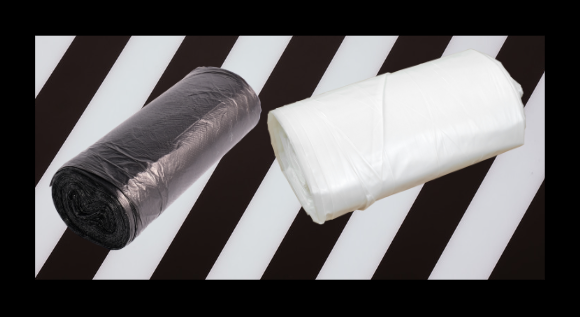So What Is Plastic Sheeting AKA Poly Sheeting?

Plastic sheeting is a versatile material used in various applications, but for those unfamiliar, understanding its composition and durability can be daunting. Let's break it down.
What is Plastic Sheeting? Plastic sheeting is typically made from polyethylene, a thermoplastic polymer. While polyethylene is durable, it doesn't fare well under prolonged exposure to sunlight, leading to degradation and brittleness over time.
Plastic Sheeting Consumption in the USA
Plastic sheeting plays a ubiquitous role in American life, but how much is actually used? Buckle up, because the numbers are staggering.
- Annual Consumption: While a definitive figure can be elusive, estimates suggest the United States uses between 110 and 130 billion pounds of plastic sheeting annually! [Source: Gitnux.org, Earth Day Network]
Sheeting the Business Landscape: This plastic goes towards a diverse range of applications:
- Packaging: This is the undisputed champion, accounting for over 50% of plastic sheeting use. Everything from food to industrial goods gets wrapped in plastic for protection and transport.
- Construction: The building and construction industry relies heavily on sheeting for temporary structures, moisture control, and protecting surfaces during renovations.
- Agriculture: Greenhouses, silage wrap for crops, and weed control mats all utilize plastic sheeting extensively.
- Manufacturing: From protective covers for machinery to forming parts during production processes, plastic sheeting plays a vital role.
The Packaging Powerhouse: So, why is packaging the leader in plastic sheeting consumption? Here's the breakdown:
- Convenience and Efficiency: Plastic sheeting offers a lightweight, inexpensive way to protect and transport goods, streamlining the packaging process.
- Product Shelf Life: Many food items rely on plastic wrap to maintain freshness and extend shelf life, reducing spoilage and waste.
- Versatility: Plastic sheeting can be customized in terms of thickness, clarity, and strength, making it suitable for a wide range of packaging needs.
Why Thicker is Usually Stronger: Thicker plastic sheeting tends to be stronger and more durable than thinner alternatives. However, thickness alone isn't always enough to ensure longevity, especially when exposed to the elements.
String Reinforcement and Additives: To enhance strength and durability, some plastic sheeting is reinforced with strings or fibers. This string reinforcement improves tear resistance and structural integrity, making it suitable for demanding applications. Additionally, additives like UV protection and fire retardants can prolong the lifespan of plastic sheeting, especially when used outdoors.
Applications in Disaster Scenarios: String reinforced plastic sheeting shines in disaster scenarios, where quick and effective shelter solutions are crucial. This durable material can be used to create temporary shelters, cover damaged roofs, or protect belongings from the elements in emergency situations.
Choosing the Right Plastic Sheeting: When selecting plastic sheeting, consider factors like thickness, reinforcement, and additives. Thicker, string-reinforced options with UV protection and fire retardant additives are ideal for outdoor use, ensuring long-lasting performance even in harsh conditions.
Sheeting the Business Landscape: This plastic goes towards a diverse range of applications:
- Packaging: This is the undisputed champion, accounting for over 50% of plastic sheeting use. Everything from food to industrial goods gets wrapped in plastic for protection and transport.
- Construction: The building and construction industry relies heavily on sheeting for temporary structures, moisture control, and protecting surfaces during renovations.
- Agriculture: Greenhouses, silage wrap for crops, and weed control mats all utilize plastic sheeting extensively.
- Manufacturing: From protective covers for machinery to forming parts during production processes, plastic sheeting plays a vital role.
The Packaging Powerhouse: So, why is packaging the leader in plastic sheeting consumption? Here's the breakdown:
- Convenience and Efficiency: Plastic sheeting offers a lightweight, inexpensive way to protect and transport goods, streamlining the packaging process.
- Product Shelf Life: Many food items rely on plastic wrap to maintain freshness and extend shelf life, reducing spoilage and waste.
- Versatility: Plastic sheeting can be customized in terms of thickness, clarity, and strength, making it suitable for a wide range of packaging needs.
Did you know? Here are some surprising facts about plastic sheeting in the USA:
- Enough to Wrap the Earth: If laid out flat, the amount of plastic sheeting used in the US annually could potentially wrap the entire Earth more than 2.5 times!
- Beyond Oil: While traditionally derived from petroleum, some plastic sheeting is now being produced from renewable resources like corn starch, offering a more sustainable option.
- Hidden Microplastics: The breakdown of plastic sheeting can contribute to microplastic pollution, tiny plastic fragments harming ecosystems and potentially entering the food chain.
The Future of Plastic Sheeting: As sustainability concerns grow, the industry is exploring alternatives like biodegradable or compostable materials. Additionally, efforts are underway to improve plastic recycling to reduce overall environmental impact. The future of plastic sheeting will likely involve a balance between functionality, affordability, and environmental responsibility.
Conclusion: Plastic sheeting may seem simple, but its composition and characteristics can vary widely. By understanding its components and applications, you can confidently choose the right type of plastic sheeting for your needs, whether it's for temporary shelters in disaster scenarios or protecting belongings from the elements at home.


